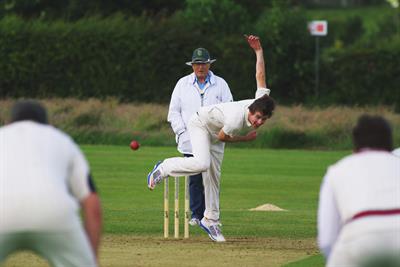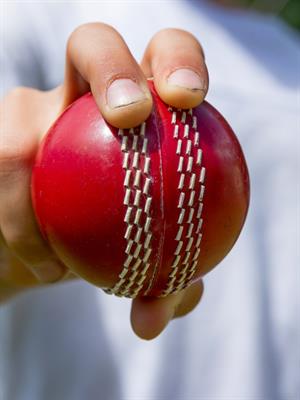PDF chapter test TRY NOW
The world’s first cricket club was formed in Hambledon in the1760s and the Marylebone Cricket Club (MCC) was founded in 1787. During the 1760s and 1770s it became common to pitch the ball through the air rather than roll it along the ground. This change gave bowlers the options of length, deception through the air, plus increased pace. It also opened new possibilities for spin and swing. In response, batsmen had to master timing and shot selection. One immediate result was the replacement of the curved bat with the straight one. The weight of the ball was limited to between 51⁄2 to 53⁄4 ounces, and the width of the bat to four inches. In 1774, the first leg-before law was published. Also around this time, a third stump became common. By 1780, three days had become the length of a major match, and this year also saw the creation of the first six-seam cricket ball.
Explanation:
The codified laws were set up by some of the founding clubs and organisations. The first cricket club was founded in Hambledon in the \(1760s\). A cricket club forms and enrols teams from all localities and conducts and gets sponsors for matches. It formed and conducted its first match between Essex and Middlesex, in the grounds sponsored by Thomas Lord, which later went on to become the famous Lord's stadium. The ground was in a place called Marylebone, which was the base for the MCC (Marylebone Cricket Club) in \(1787\). This club was laid out the rules for appointing umpires, dimensions of the ground etc.
One of the most defining changes was the replacement of rolling the ball by the bowler to spinning it towards the batsman. This gave them a lot of space to experiment, as they got to choose the speed with which they can spin a ball, the speed and length they need to pitch the ball. On the other hand, the batsmen have to study the types of shots to hit balls of varying speed and length. When the ball was rolled over, they had enough time to strike, but when it is swung, the timing has to be concentrated as well. As a result of this change, the stick/bat was changed into a long one without the curve in the end. The ball's weight was decided to be \(5\) \(1/2\) or \(5\) \(3/4\) ounces. The width of the bat was four inches, as it was easy to hit the ball. In cricket, if the ball hits the wicket, then the batsman gets out.

Bowling in the air
Initially, batsmen used to block the ball from hitting the wicket with their leg. To avoid this, the leg before wicket rule was established in \(1774\). By the rule, if the ball had the chance of hitting the wicket, and the batsman's leg comes in between as a means to stop it, then he was given an out. Around this time, there was another rule regarding the stumps, when there were only two stumps until then. In \(1775\), in a particular match, an English bowler named Lumpy Stevens, who was considered the greatest bowler of the time, bowled three consecutive balls to his batsman, which passed through the two stumps. It was then changed to three stumps. The longest duration of a match that was played changed to as long as three days. A cricket ball was usually made with twines wound together around a red shell. It is brought together by a seam that stitches them. The first six seam cricket ball was made around this time, which means that the circular stitching that joins the two halves of the ball had around six rows of stitches, which gives it a unique gripping and ability to swing.

A six seamed cricket ball
Meaning of difficult words:
| S.No | Words | Meaning |
1 | Pitch the ball | To spin and swing the ball |
2 | Deception | Make believe or deceive |
3 | Replacement | To exchange a thing for the other |
4 | Seam | A row of stitches where two fabrics are sewn together |
5 | Pace | Speed |
Reference:
National Council of Educational Research and Training (2007). Honeycomb. The Cricket Story- Ramachandra Guha (pp. 139-151). Published at the Publication Division by the Secretary, National Council of Educational Research and Training, Sri Aurobindo Marg, New Delhi.
